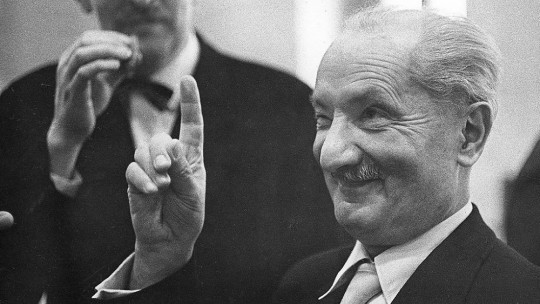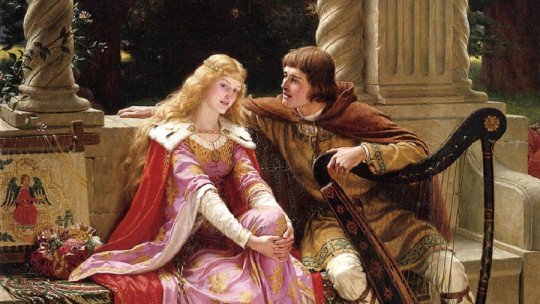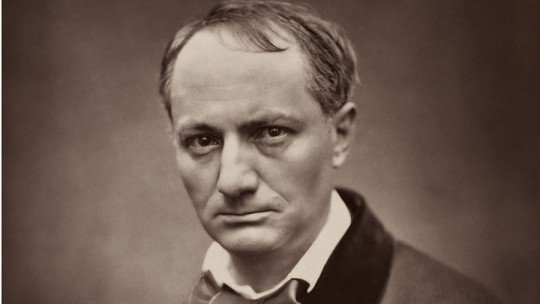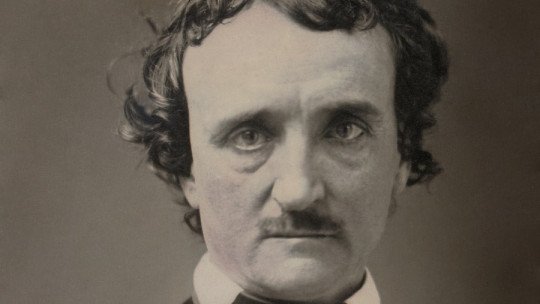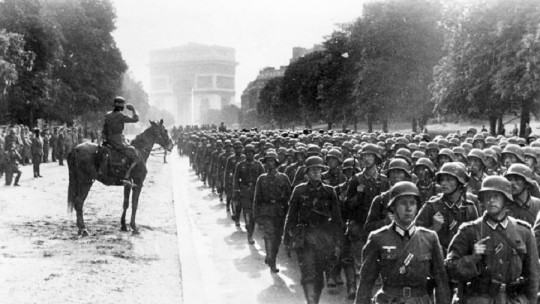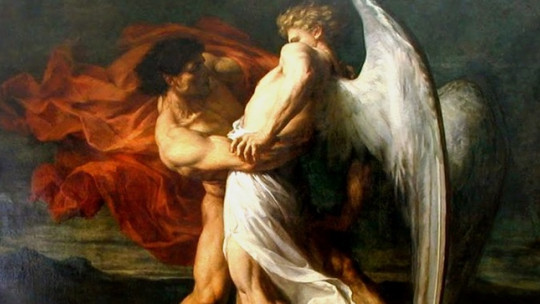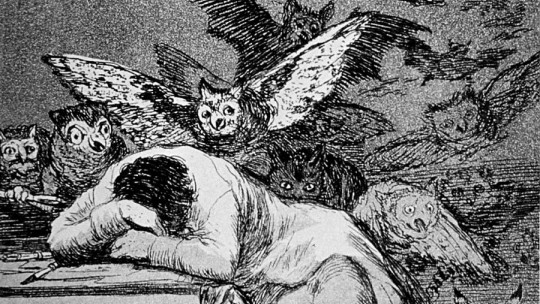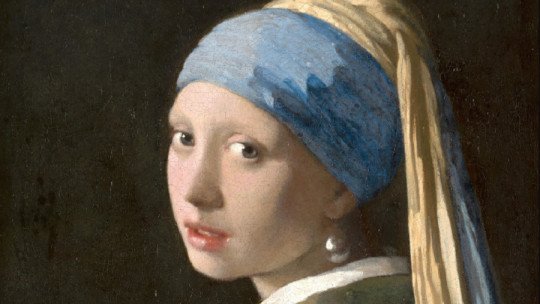
Has art always been transcendental? This may be a question that comes to mind, especially in relation to certain controversial contemporary art exhibitions. Many attack them with the argument that art is something “superior” and “transcendent”, and that, the moment it descends to the common, it loses all its meaning..
What is true in this thought? In truth, and like everything, it depends on how you look at it. The idea of art as transcendence is very typical of the first half of the 19th century, especially when Romanticism and the Sublime were all the rage among European intellectuals. It is at that moment when the figure of the artist as a tormented genius and directly inspired by something higher enters the scene. However, has it always been like this? Join us today through this review of the meaning of art throughout history.
Has art always been transcendental?
In reality, the question from which we must start is not this, but the following: what is art?
Unfortunately, the concept has almost as many meanings as there are people who think about it. The idea of what is and what is not art has been changing throughout history, and has often taken on meanings that are radically opposite to each other. For example, In the Middle Ages, what we currently consider art was, in reality, pure craftsmanship. That is to say, a painter was a craftsman on the same level as a shoemaker, a blacksmith or a sculptor, since he worked with his hands and not with his intellect, according to the criteria of the time.
This concept of art and of artist It varied over time. In the Renaissance, Alberti already claimed the intellectual role of the artist, but a couple of centuries later, in Baroque Spain, Velázquez still had to fight to be considered as such.
However, and returning to the concept of art and artists In the Middle Ages, it is worth asking: Weren’t these “craftsmen” creating works with a transcendent meaning? Gothic cathedrals sought verticality, a direct ascension towards God. The sculptures and paintings sought to capture in a plastic and tangible way a series of spiritual ideas, very difficult to explain with words. Therefore, we can affirm that, although the artist was a “simple” worker, his work did have a transcendent meaning.
The creative capacity: exclusive to human beings?
The next question we could ask ourselves would be the following: is art, and therefore the creative capacity, something exclusive to human beings? Is that precisely what distinguishes us as a species? Various studies have been carried out in this regard, especially with our closest relatives, the primates. There was a very famous case of a chimpanzee called Congo who was capable of capturing colored doodles on canvas, who went around the world under headlines that said that animals were also capable of creating art.
It is not the purpose of this article to analyze this aspect, but we can ask ourselves if the chimpanzee carried out his “works” out of a transcendent desire, which is obviously not the case. It is true that, according to some witnesses to the process, when he painted he seemed extremely concentrated and became very angry if he was not allowed to finish. What moved him Congo to paint?
It may be that the first humans painted the first rock art with a similar meaning to that of the Congo. What has always been interpreted as manifestations of early religions may be just entertainment. Or maybe not. We will never know.
The first testimonies
In any case, and whatever their intention, these prehistoric cave paintings are considered art; Not only that, but they are called abstract paintingin the sense that they do not aim to capture elements of reality, but rather ideas or concepts, which gives them, again, a transcendent intention.
Figurative painting is also abundant in prehistoric times.. We do not know for what purpose the animal figures that abound in the sites were captured (in surprising detail, by the way). Nor do we know why, while the animals are meticulously represented, the anthropomorphic figures are schematic, closer to a concept of “human being” than to a real representation.
In any case, we can ask ourselves the following: are these prehistoric paintings testimony of an ancient spirituality, or were they only done as mere entertainment, like someone who paints little flowers on pottery to pass the time? Did they have any relationship with sympathetic magic? The enigma remains open.
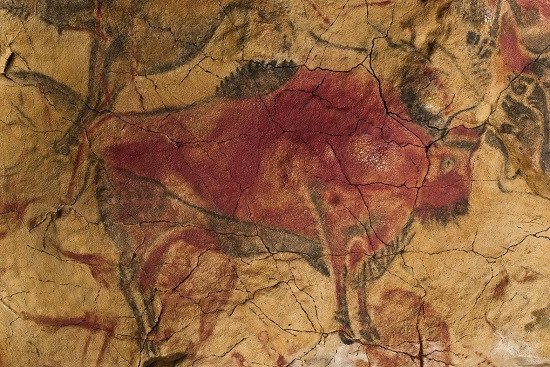
Art as a spiritual expression… but also of status
If we go back to the first civilizations (Mesopotamia, Egypt, Greece, Mesoamerican cultures…), we find that art had an evident transcendental intention, closely linked to religion and its rites.
Roman culture, however, already represents a change. Despite being strongly linked to the official religion, In Rome we find a capital importance to the portrait as a symbol of social status (show the antiquity of the family in question), and, quite often, representations of the gods have a more decorative than spiritual character.
On the other hand, architecture and engineering, two disciplines in which the Romans especially excelled, did not have to be linked to any sense of transcendence. Some of these magnificent works, such as bridges, aqueducts, baths and amphitheatres, had a civil, practical and recreational character, but in no way transcendental.
Art as the expression of power and status has always existed in the history of humanity. In this case, creation loses any link with the transcendent and is related to what is closest and most practical: political propaganda (which has always existed), the discourse of power, manipulation… the Romans, as excellent politicians who were , they knew very well the power that the image had and knew how to use it perfectly.
What it seems and what it is
On some occasions, behind images that are apparently everyday (such as still lifes), an idea of transcendence can be hidden. This is typical of the still lifes of the 16th and 17th centuries, where, After the capture of a piece of reality, there is the concept of the passage of time, decline and inevitable death (manifested, for example, in a cut flower in a glass).
Similar to what happens with still lifes, which often hide countless transcendent symbols, we find landscape painting. Often considered an inconsequential genre, landscapes can be linked, especially in certain periods, to an entire philosophy. A very clear example is the painter Caspar David Friedrich (1774-1840), who in his beautiful and often gloomy landscapes hid messages of death, hope and resurrection.
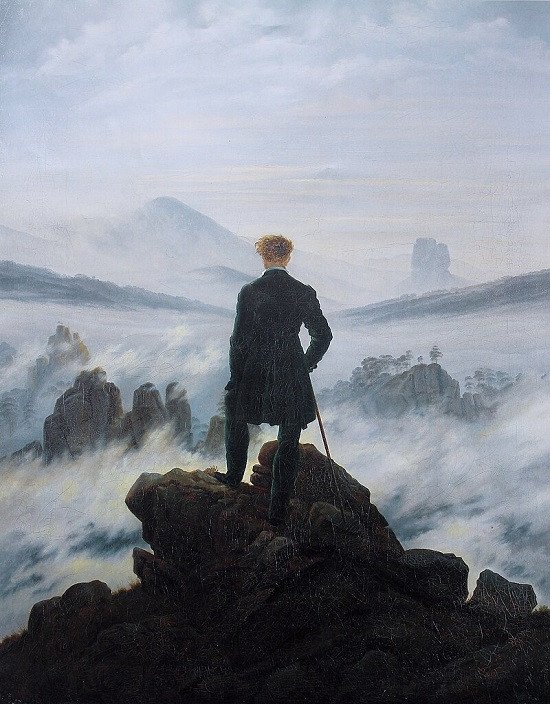
The “rupture” of contemporaneity
Starting in the 18th century and, especially, in the 19th century, art definitively became something “transcendent”, a language that must be used to express the highest. In reality, and despite the distance, we are children of this concept of art, which is why sometimes it is so difficult for us to “understand” non-transcendental art.
The first breaks came in the second half of the 19th century; ruptures that were later consolidated in the avant-garde of the 20th century, especially with movements such as Dadaistwhich sought to rid art of all transcendent weight. Concepts like art and artists They were reviewed again, as had already been done in the Renaissance, when it was questioned whether the artist was a simple craftsman..
Pop art of the second half of the 20th century is the explosion of commercial art. Currently, artistic creation is more linked to fierce capitalism, the protagonist of globalization, than to any transcendental idea. The fact that the works of certain authors are paid for with millions of dollars at auction gives us an idea of the commercialization of art and its distance from any type of transcendence.
Conclusions
Do we, then, live in an era of lack of artistic transcendence? Yes and no. It is true that ours is an era of art commercialization, but this, on the other hand, is something that has always existed. Art dealers are not creations of the 21st century, far from it, and the hoarding of artistic works, not so much for “transcendence” but rather for social status, was something characteristic of the 16th and 17th centuries.
In the Middle Ages there were artisans who, grouped in guilds, produced art. They did not sign, because their name was not important; only they manufactured sculptures and paintings. It is true, however, that ultimately the art they created had a transcendent meaning, since it was linked to religion and the final meaning of existence.
On the other hand, art has been used on numerous occasions as propaganda and a symbol of power. This is nothing new either. From the entire political program of Augustus, embodied in works such as the Augustus of Prima Portato the sense of confirmation of power and status that is the entire palace of Versailles, for example. Art has also served, therefore, to show off.
In conclusion, we can say that the idea that art has always been transcendent is incorrect. Art, as a human creation, can be linked to many diverse intentions, some more legitimate than others.

